Text
It is definitely important to grow your creative thinking skills, but you have to constantly be in that mindset to become a great designer. I agree that putting yourself in a working environment is very important, like some say, you can’t eat where you sleep. You stated that, “since your working with so many different people, minds ,and cultures,” you will be forced into situations that make you act with a clear mind. Thinking with a clear mind is important yes, but don’t you think that since you’re working with so many other individuals, you should use them in order to receive feedback? Staying focused and using your senses are key factors, but sometimes you need another set of eyes to reveal what you can’t see yourself. -Holly
Creative Thinking essay
Creative Thinking essay
Creative thinking is seen as a way of looking into problems or situations from a unbiased perspective. Creative thinking is also seen as being the companion of critical thinking. Which are both ways of getting your creative juices flowing. Some have a hard time getting those juices flowing and that can be because you are coming from a biased perspective and you need to clear your mind or simple because your not stimulating your creative thinking process. Fixing both of those things can help set you up to be successful in any situation and create wonderful things
In the college world creative thinking is very important because it helps us learn to think differently and not base our opinions on the past.
I believe college is a place where you learn about different creative thinking skills and build on top of those. LumenLearning.com goes into detail about different styles of creative thinking and why it is beneficial. They state that “As a creative thinker, you are curious, optimistic, and imaginative. You see problems as interesting opportunities, and you challenge assumptions and suspend judgment. You don’t give up easily. You work hard.
It is very important to grow on your creative thinking skills since it is crucial in everyday life, especially when you get a job. In the artificial “Creative Thinking Skills” they state that walking around with an open mind in a working environment will get you further in life. Since your working with so many different people, minds ,and cultures you will be force into situations that force you to act with a clear mind. I Personally agree, when trying to fix a problem, whether it is a art problem or medical problems, you cannot go into the fight thinking there is only one answer and one solution. You have to have the mindset that the goal is to just fix the problem not to make your solution fit the problem.
How do you stimulate creative thinking? For me to get my mind stimulated i have to put myself in nerve racking situations. I believe fear and confusion can bring up brain activity. The youtube video i found called “how to stimulate the creative process by HOWcast” explains that messing with the 5 senses can help the stimulating process. Especially for artists observing your surroundings, events, and nature around you can lead to stimulation. Mind-mapping is something artists do naturally that is actually a very common stimulant. Mind mapping can be done in different ways like:drawing images in different situations to view it from all perspectives, or making a visual word list. The key to stimulating your creative thought process is to find out what strategy works best for you.
In conclusion creative thinking is a technique or style that mental gets you ready for any situation. Instead of making the problem about right or wrong from the jump it sets you up to attack the problem with a clear mind so reaching the solution is smooth.
https://courses.lumenlearning.com/suny-collegesuccess-lumen1/chapter/creative-thinking-skills/
http://www.businessdictionary.com/definition/creative-thinking.html
https://www.youtube.com/watch?v=kPC8e-Jk5uw
7 notes
·
View notes
Text
I totally agree with you when you stated that the 5 design steps “cover the bases of how you should start your own process.” There are probably over 100 different steps you could follow to create the best design, but it’s all about coming up with your OWN process. Take it however you want to take it and by god you should most definitely take a break! It’s extremely important to shift your focus and come back with a fresh set of eyes. As Caleb always said, “don't just sit there and move pixels across the screen.” After reading some other essays, and yours in particular I've found just how important the “incubation” stage is. You need to get out what you can and let all of it sink in and then step away from the screen. Let the creative thoughts come to you!
-Holly
Design Thinking: A Process
In class there were five specific steps to the design process: discovery, interpretation, ideation, experimentation, and implementation. While these aren’t hard and fast rules to live by when problem solving or designing, they do cover the bases of how you should start your own process. There are also other things to consider in developing your own design process, like taking a break and stepping away from your projects, using the three H’s, and expanding your process beyond physical design work.
One of the most beneficial things you can do in the early design process sounds like the most counter-productive… stepping away from your work and take a break. Don Draper from the show Mad Men said it best, “Just think about it deeply, then forget it. An idea will jump in your face.” In the book “The Art of Thought” by Graham Wallas, the design process is broken down into four stages, and the second stage is incubation. In the incubation stage, you’ve already gathered as much information about the problem you are trying to solve, and now you’re letting it marinate while you step away for a while. Inspiration can come from doing the most mundane tasks. I personally like to take walks with my dog and get inspired by what’s going on around me. Clearing your mind allows for more creative ideas to flow in!
After you’ve cleared your head, it’s time to come back and use it. In an article for the American Institute of Graphic Arts, designer Richard Grefe writes about the “three H’s” head, heart, and hand and it’s incorporation into modern design work. Using your head is thinking critically and creatively to problem solve. Join creative thinking with empathy and you think of human-centered solutions, then craft that solution with your talent and hand-skills. By engaging all three parts you can maximize your own ideas and skillsets to come up with better solutions to design problems.
In The Field Guide to Human-Centered Design from the designers at IDEO, the design process is enhanced by expanding that process beyond physical design work. Much like Grefe’s recommendation of using your heart in your process, IDEO implements seven mindsets that enhance the process and create a greater human experience through design. These mindsets include empathy, optimism, iteration, creative confidence, making, embracing ambiguity, and learning from failure. Notice how very few of these mindsets involve doing any physical design work. Expanding your process to include real human feeling and emotion makes a greater connection between you, your design, and your client that the design is for, which is an all-around great set up to make a better solution to the original problem.
As you can see, the design process used in class only covers the basics of what we as designers should do to produce design work. Incubating thought, using your head, heart, and hands, and expanding your design process to include emotional responses to the human experience are all great things to include into your own personal design process.
Resources:
Wallas, Graham, The Art of Thought
Grefe, Richard, Head, Heart and Hand: Modern Design Practice https://www.aiga.org/aiga/content/about-aiga/insight/head-heart-and-hand-modern-design-practice/
IDEO, The Field Guide to Human-Centered Design
6 notes
·
View notes
Text
I hate to be the second one to say this… but I disagree that “no good idea comes from just one brainstorming session.” Sometimes you only need one brainstorming session to come up with an idea, it’s being able to iterate and refine such an idea that's important. I do agree though that “great ideas come from multiple resources including your own mind, nature, other people’s thoughts and input, and observing the world around you.” Like you said, preparation is most important, and gathering resources from your mind, internet, and other individuals is a key factor in the creative process. Other people’s input though might be an ongoing task that ties into the information stage. As you show sketches, thumbnails, and roughs you continue to gather more information and knowledge.
The Importance of Preparation in Creative Thinking
Angelina Lodes
12.10.18
Imaging 1, Caleb Horn
Design Writing no.2
Creative thinking is a way of looking at problems from a different and unique perspective to develop innovative ideas. Creative thinking can be stimulated both by an unstructured process such as brainstorming, and by a structured process such as lateral thinking. Lateral thinking is the process of solving problems from an indirect and creative approach, and usually involves using nontraditional steps to solving a problem. There are four steps to the creative thinking process and out of those four I believe the most important one is preparation.
First, no good idea comes from just one brainstorming session. Great ideas come from multiple resources including your own mind, nature, other people’s thoughts and input, and observing the world around you. Noticing things that may have gone undetected in the past or looking at the problem from different perspectives help give the designer a more rounded collection of data to use. You don’t even have to start with an idea in the preparation phase, all you need is something to write down thoughts and information and you can start by going on a walk or checking out a new store. Even the grocery store can be an excellent place to do your creative thinking while grocery shopping. Start looking at the places you go to daily in new perspectives and the ideas will just start flowing. It doesn’t take a million places, only a million ideas.
Secondly, gathering information is just the beginning of the preparation stage. After all that can be possibly gathered from the resources around you, then comes the organizing phase. You read, sort, organize, and outline it all to help you in the next stage, incubation. The Peak Performing Arts Center had an interesting article on the creative process and emphasized that “you cannot just hope for inspiration to strike, you have to plan and prepare for creativity.” Preparation is the key for success for anything you do. Whether you are cooking, cleaning, or creating, you need to prepare for every one of those situations
Lastly, before coming to the incubation stage, a designer must make sure they have exhausted all their preparation resources, then start building ideas. While gathering information you may come across an unusual finding that may make for a good design product. It is important to note all thoughts while gathering information, so you can go back and expand them even further. What you thought was a silly idea could turn out to be the best idea you have, it’s all about changing your perspective.
In conclusion, all the steps of creative thinking are important, but preparation is what sets you up for success or failure in any circumstance. Gather as much information as possible and become acquainted with what it is you are trying to solve. Without preparation, creative thinking will not be successful.
Citation: “Creative Thinking Process.” The Peak Performance Center, thepeakperformancecenter.com/educational-learning/thinking/types-of-thinking-2/creative-thinking-process/.
14 notes
·
View notes
Text
I agree with you when you said that creative thinking is “literally the ideation of the saying “thinking outside the box.” You couldn’t have said it better. You really do have to think outside of your comfort zone to come up with ideas for a design. I also agree with what you said about the “alternatives.” This can also be thought of as iterations, and you need to be able to come up with a good amount of them in order to refine and/or scrap what you’ve got. Like you said, you wouldn't have found a breakthrough otherwise. I don't entirely agree that focus and challenge are steps in the process. You need to constantly challenge yourself and stay focused as you go through the work process. But, I do agree that changing your focus can improve the creative process. -Holly
Creative Thinking Design writing
Skylar Schexnayder
Imaging, 1302
12/10/2018
Caleb Horn
Creative Thinking
Creative thinking is looking at an issue or problem and looking at it in a new way, literally the ideation of the saying “thinking outside the box”. Creative thinking has also been known as Lateral Thinking. Lateral thinking was defined as “the ability to perceive patterns that are not obvious,” (quoted from https://www.thebalancecareers.com/creative-thinking-definition-with-examples-2063744 ) “Lateral thinking is a manner of solving problems using an indirect and creative approach via reasoning that is not immediately obvious. It involves ideas that may not be obtainable using only traditional step-by-step logic” (quoted from Wikipedia). There are a few steps that can be beneficial when considering Lateral Thinking and Creative Thinking Techniques.
The first step in the Creative / Lateral Thinking process is alternatives. In the alternatives phase you need to use different concepts to create new ideas. This step in the process is probably one of the hardest to apply affectively. Being able to sacrifice ideas during the beginning steps can lead you to a very important break through that you wouldn’t have found otherwise.
The second step in the Creative / Lateral Thinking process is focus. In the focus process you need to sharpen and change the main points you are focusing on. Changing your focus back and forth can help improve the creative efforts. Being able to give attention to every aspect of your project without sacrificing the importance of one step can be extremely beneficial to your Creative thinking process.
The third step in the Creative / Lateral Thinking process is challenge. In the challenge step of the process the main goal is to break away from limited thinking. It is important to not allow the limits of the usual or accepted ways to keep you from breaking through in your thinking process.
The fourth step in the Creative / Lateral Thinking process is random entry. In the random entry phase of the process you are trying to open up new lines of thinking. To unlock new ways of thinking you must use unconnected information or ideas to correlate with your thinking.
The fifth step in the Creative / Lateral Thinking process is provocation and moment. In the provocation and moment stage you are starting from a provocative idea or statement. The goal in this step is to move from that statement or idea and keep expanding on it. The movement aspect of this step is probably the most important part of this step.
The sixth step in the Creative / Lateral Thinking process is harvesting. In the Harvesting step of the process you are creating a selection of only the best ideas you have received during this creative thinking. Once you have the list of the best possible ideas, it is important to shape these ideas into a particular solution.
The seventh step in the Creative / Lateral Thinking process is treatment of ideas. In the treatment of ideas phase the most important part is the way that you treat these ideas and apply them to situations. This is the final step but possibly the most important part of creative thinking. Being original in concepts, ideas, and open to changes in concepts is a good thing to keep in mind throughout all of these steps as they are being applied. One of the main focus of the creative thinking is being able to be creative, hence the name “Creative Thinking”.
1 note
·
View note
Text
Field Guide to Human-centered Design: A 3 Step Process
IDEO’s Field Guide to Human-centered Design has set the difficulty, time, and what you would need to go through these steps. Take your time with these things, it’s not always that simple to come up with a good concept on the spot. Make sure you understand that whatever process you decide to go through you will need to have some sense of inspiration, you’ll idealize it and then implement your design into the real world.
The Field Guide to Human-centered Design by IDEO is heavily armed with the tools needed to be a great designer. By having the right mindset, a good 3 step process, and the help of your peers you’ll be able to get there in no time. After you have established a positive mindset an you feel as if you are creatively confident to tackle ideas, you can start with this 3 step process. No matter what the design challenge might be you’ll go through 3 main phases: Inspiration, Ideation, and Implementation. By going through this 3 step process, you’ll be able to produce empathy with the individuals you’re designing with and for. You’ll figure out how to turn what you’ve learned from your peers, professor, client etc. into a chance to design a new idea; and you’ll build and test your ideas before presenting them to the world. Take things slow and do whatever you feel comfortable with and this process will set you on the right track. IDEO has many steps within these phases and I’m going to touch on what I think is most important for designers without being too lengthy, feel free to review all the steps.
First off is Inspiration. This one’s tough and takes time. IDEO states that “the inspiration phase is about learning to fly, opening yourself up to creative possibilities, and trusting that as long as you remain grounded in desires of the communities you’re engaging, your ideas will evolve into the right solutions.” The first step within this phase is framing your design. This step is critical to your success. IDEO suggests that you should take a stab at writing and refining your ideas, and ask questions from there. I’ve learned that the best way of doing this is to go on Pinterest and gather photos and ideas. You can also do this by writing a list of ideas, and with these two things you’ll be able to refine from there. Next is coming up with a plan. IDEO states that “even though they’re bound to change as things progress, you’ll be in much better shape if you can plan for what’s ahead.” This is exactly the same scenario when a professor or client would tell you to go ahead and write your statement of intent. Sure it is bound to change but go ahead and start jotting down what you intend to do. Next is building a team if you’re able to, but when you’re working alone its best to just get feedback from other individuals as you go. IDEO talks a lot about analogous inspiration, where you would initially try to get a new perspective on your research and shift your focus to a new context. After you get some feedback gather secondary research if needed, re-draw, back-step as much as you need to get yourself on the right track.
Next up is Ideation. IDEO states that within this phase “you’ll share what you’ve learned with your team, make sense of a vast amount of data, and identify opportunities for design. You’ll generate lots of ideas, some of which you’ll keep, and others which you’ll discard. You’ll get tangible by building rough prototypes of your ideas, then you’ll share them with the people from whom you’ve learned and get their feedback. You’ll keep iterating, refining, and building until you’re ready to get your solution out into the world.” Develop some thumbnails and then take everything you’ve learned, research and the feedback you were given and start refining your ideas into roughs. IDEO calls this the “Top Five.” Take your 5 best roughs and gather your peers and review again. IDEO suggests that you should do this exercise often, so refine your 5 into another 5, make as many iterations as you can and you’ll find some solution within it. Ask yourself some questions: Is there a theme? Is there a hierarchy? Etc. Develop the best possible concept.
Last but not least, Implementation. This is the phase where you’ll bring your ideas to life. For us, that’s gathering your research and ideas and bringing your roughs, photos, etc. into photoshop, illustrator or whatever program preferred, and start developing your concept. Keep iterating from there, IDEO says that “testing, getting feedback, and iterating will help you get a great solution to market and let you know where to push it when you do.” Evaluate what you’ve got and then it’s all about rolling with the punches. You’ll need to be able to accept criticism when given so that whenever you present your work you know what you can do to make things better.
IDEO’s Field Guide to Human-centered Design has set the difficulty, time, and what you would need to go through these steps. Take your time with these things, it’s not always that simple to come up with a good concept on the spot. Make sure you understand that whatever process you decide to go through you will need to have some sense of inspiration, you’ll idealize it and then implement your design into the real world.
12 notes
·
View notes
Photo
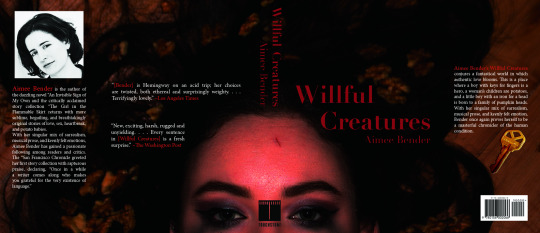
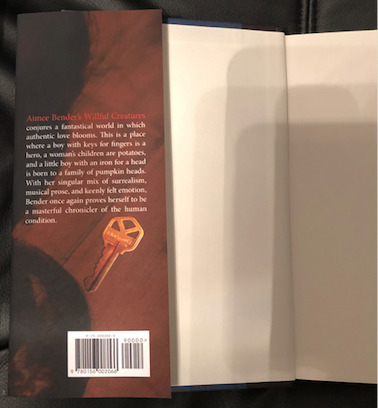
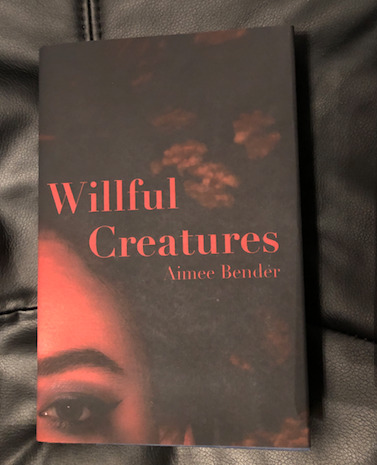
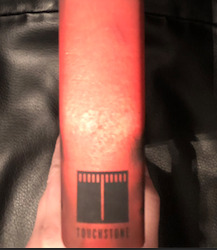


Aimee Bender’s Willful Creatures conjures a fantastical world in which authentic love blooms. This is a place where a boy with keys for fingers is a hero, a woman’s children are potatoes, and a little boy with an iron for a head is born to a family of pumpkin heads. With her singular mix of surrealism, musical prose, and keenly felt emotion, Bender proves herself to be a masterful chronicler of the human condition. The book consists of 15 different short stories in 3 parts. For my concept I decided to focus specifically on the short story “I Will Pick Out Your Ribs (from My Teeth).” A boyfriend speaks of his sad life and how his girlfriend continuously ODs. Specifically in the story he states that he hides the key for her pills in various places, and this time it was hidden in a jar of walnuts. In order to reflect this I took a picture of myself with my makeup smeared down my face to look like I was crying. I surrounded myself with walnuts and put a key on my right side. I didn’t try to perfect my face or eyebrows to show how distressed this character could be. I messed around with the different layering modes to create a dark jarred 70s look. I decided to use Didot for my cover and spine text. I used this to stick to the 70s theme. I used bold for the title and regular for the author name to differentiate them. The text fit like a puzzle piece in the walnuts. I used Minion Pro for the inside flaps and reviews so that it goes with the the body copy.
1 note
·
View note
Photo
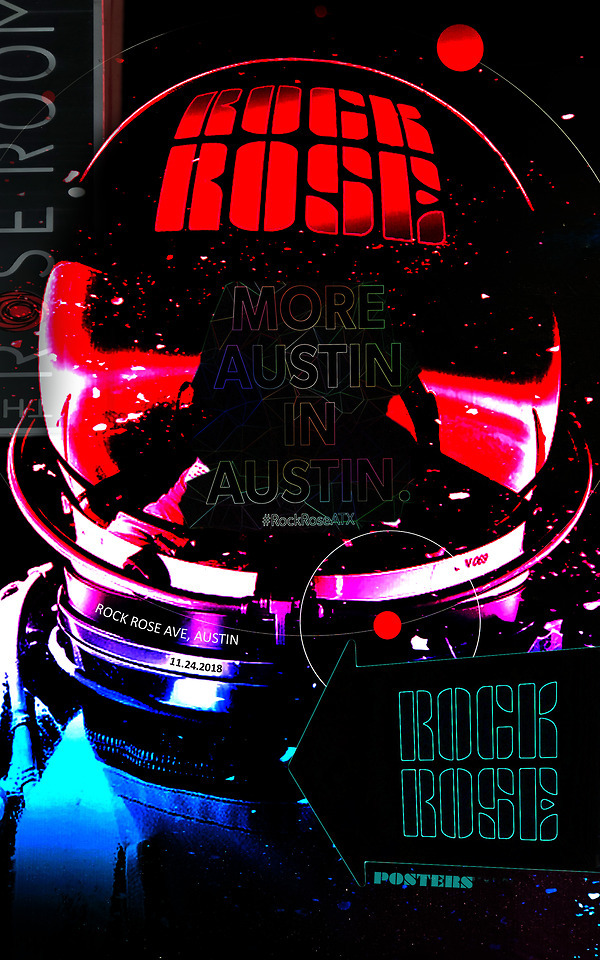
The Domain in Austin Texas has many different found lettering types within it, including: store awnings, street signs, hand painted signs, posters, wall art, etc. For this project I decided to focus specifically on Rock Rose Ave within the Domain, which mostly consists of bars and restaurants. For my concept I decided to collage posters off the walls of Rock Rose. I developed this vernacular type poster by messing around with filters and blending modes to make the colors within it to create some balance together as a cohesive piece. The hierarchy of this composition is the large Rock Rose type at the top of the poster. I left negative space that didn’t contain any text in the top right and bottom left corners to let the eye rest. I integrated the secondary text by bringing the file into illustrator to type on a line so that it goes with the flow of the astronaut helmet. I used bold Calibri in all caps for my type to match the typography in one of the posters. I also used a second font for my theme that is almost identical to the repetition of text through the poster. I wanted this concept to come off as a nightclub poster, and I think the color palate and space mood reflects that in a way that I wanted.
2 notes
·
View notes
Photo
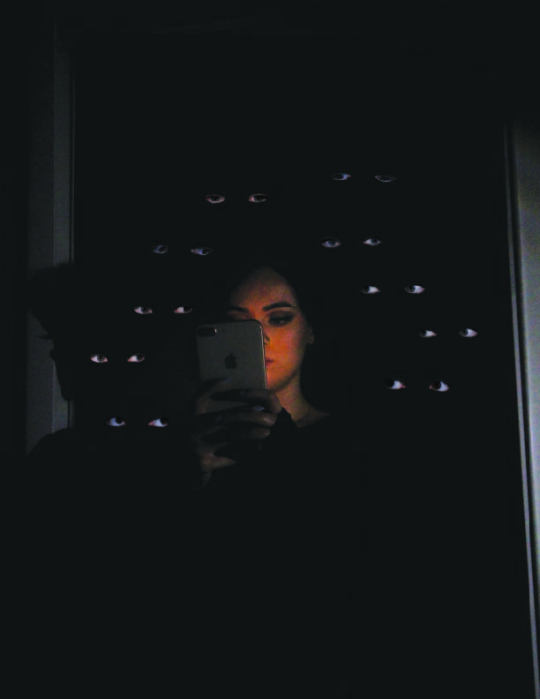
Today in society everything you think is private on the internet isn’t. People are so immersed in their phones that more of their private lives are being displayed on social media and privacy is becoming more public. There is always going to be a shadow of yourself projected through social media that will never go away. Once something is put online it stays there forever. Even if you try to delete a post, there will always be doors people can go through to find that information. In order to portray this private v public concept, I took a picture of myself privately looking at my phone with the eyes of others surrounding me through a dark open door. The hierarchy of the photo is me with secondary eyes viewing the phone. The repetition and value of the eyes create an eerie demeanor towards the photo like people are watching me. I did this by creating masks (that are feathered) of the eyes of close-ups that I scaled down to the size of my eyes to make it proportional. The eyes come through the negative space I created to look like an open door. I did this with a dark freeform shape around a closet frame that bleeds off the page. The harmonious darkness of the image all comes together as a whole to create a nightmarish mood.
1 note
·
View note
Photo

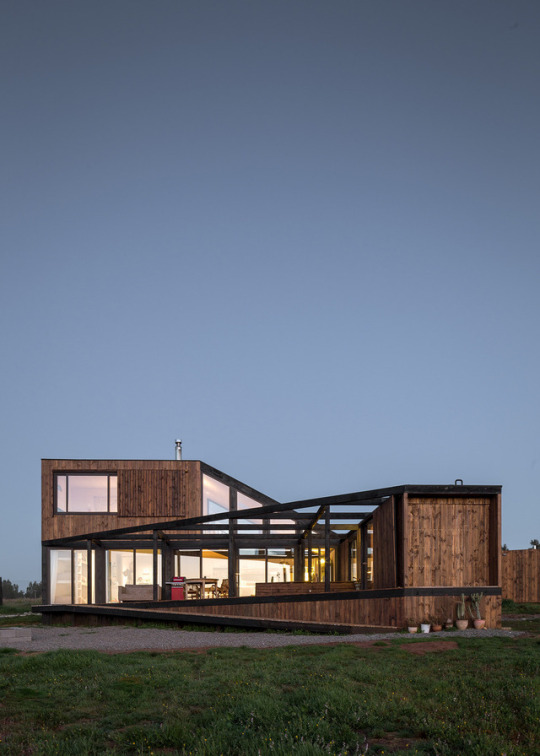
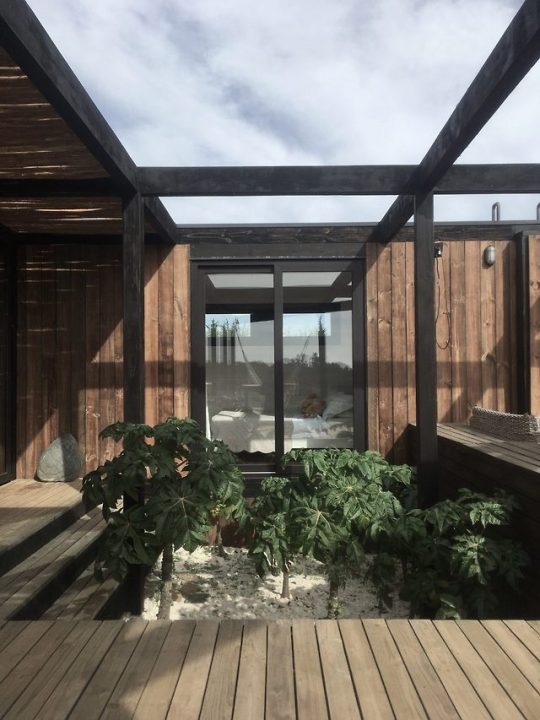

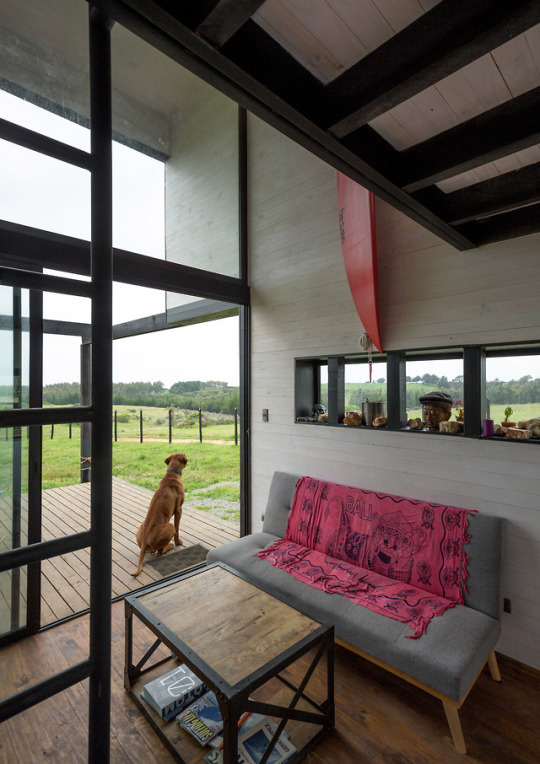
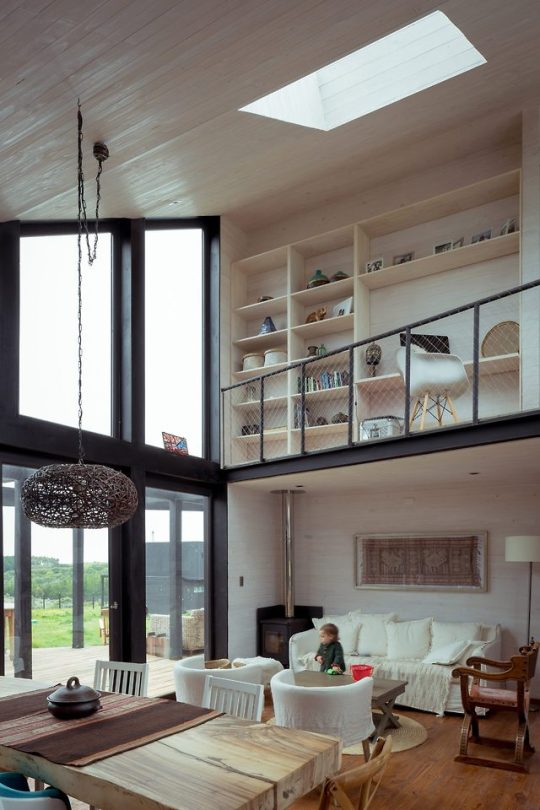
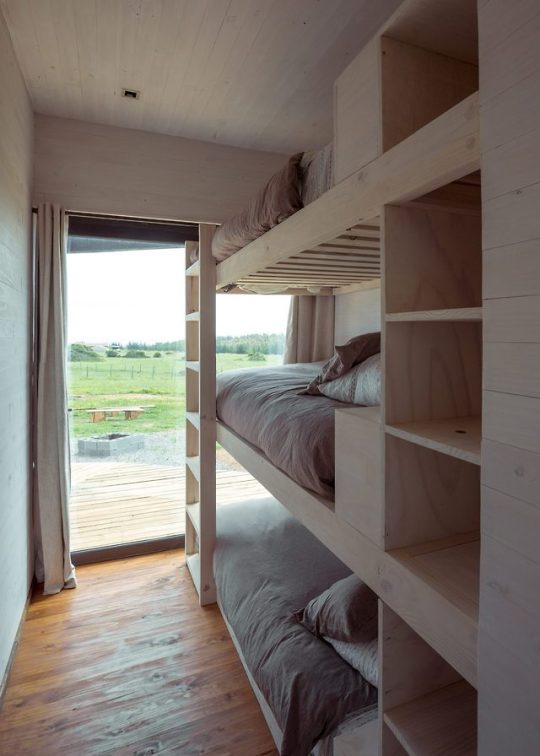
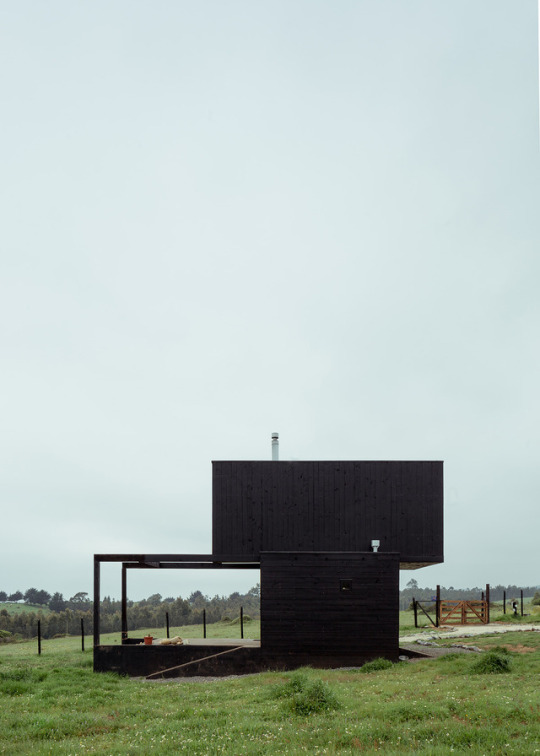

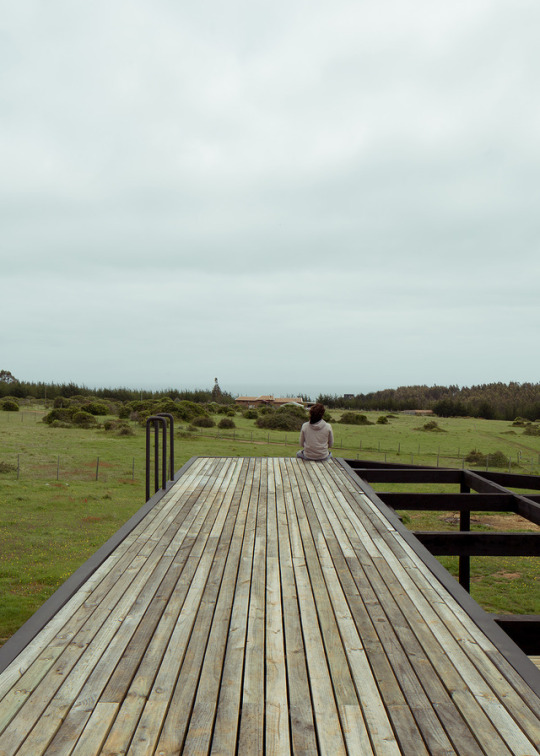
Casa BL Umwelt
Chilean architecture firm Umwelt has constructed a wood house and a black cabin for a young family, on a property overlooking the Pacific Ocean. The project comprises two buildings, titled BL1 and BL2, on a spacious plot with no trees in central Chile. Umwelt designed the residences for a young family who moved from the capital Santiago to the beach town of Cáhuil, seeking a more natural lifestyle.
The main residence, BL1, measures 1,399 square feet (130 square metres) and comprises a two-storey addition to an existing bungalow – forming an L-shaped plan and creating a triangular outdoor patio in between. The older east-west wing blocks the south wind to shelter the terrace, while a pergola shades it from the sun.
2K notes
·
View notes
Photo
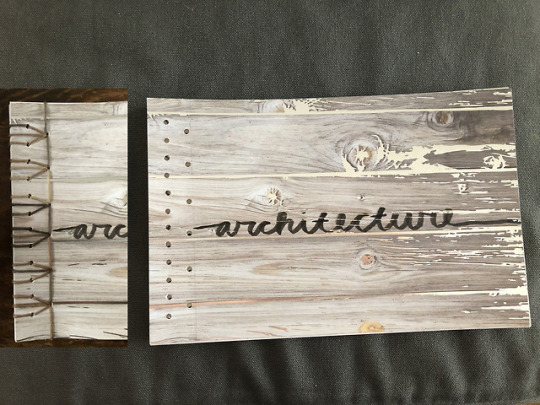

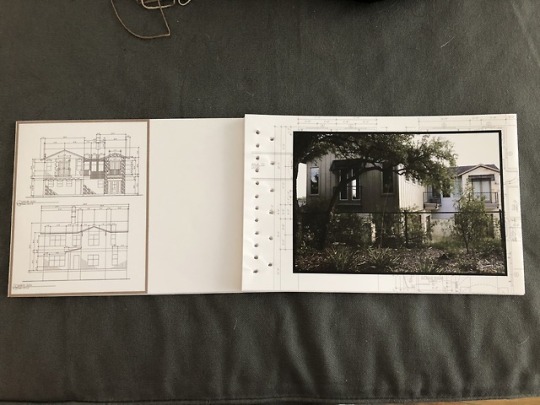

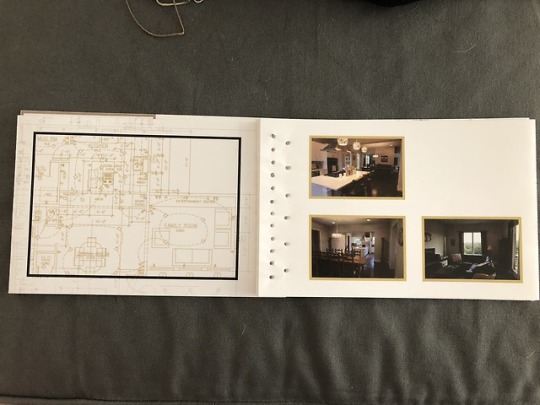

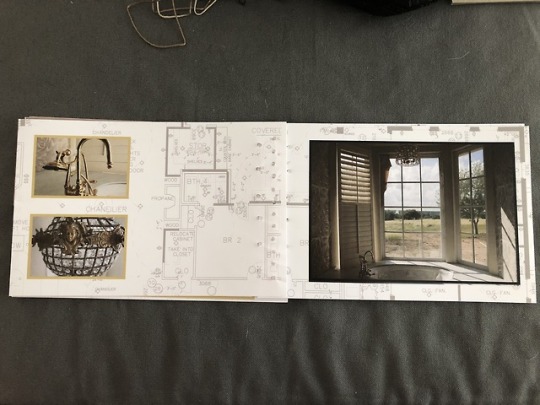
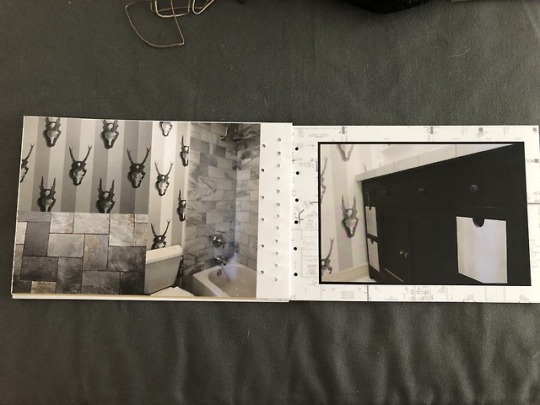
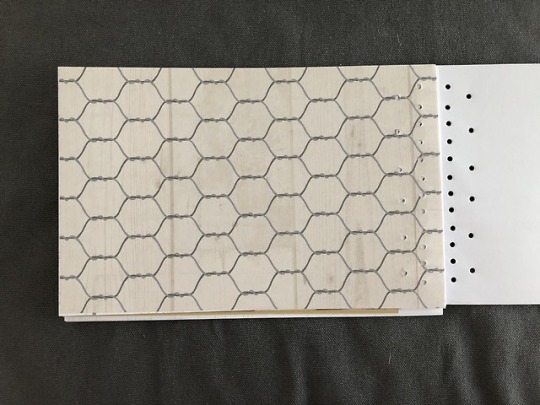

When my dad was a kid he wanted to do exactly what my grandad did, and that was building houses. The legacy continues on through my only male cousin who currently has a scholarship as an architect. These three men have influenced my love for interior design and architecture. This subject is like home to me, and after the recent passing of my grandad, this book has much more meaning to me than I had anticipated. For this project I decided to make my book over the work of an architect. I’ve grown up around architecture and it has always interested me. As I’ve gotten older I’ve began to pay closer attention to the structural form of houses I’ve come across and wondered how they were able to create such a masterpiece. It all starts with a house plan and a rough estimate. In my book I show how a house plan so simple and yet detailed at the same time can turn into a pretty amazing house. After the plans are set in stone the client makes material selections for their house, like countertops, light fixtures, stainless steel appliances, wallpaper, tile etc. within these selections, they show many different types of surfaces, textures and patterns. I used some repetition throughout the book by integrating house plans in various different ways. For the layout of my book I’ve cut the book into quarters with a half inch border on some. I left an inch for the binding. The binding on my book was bound to resemble little houses.
0 notes
Photo

After looking at various pictures of animals and design techniques I developed this pictogram system. I decided to chose a lion, elephant, walrus and frilled neck lizard for my animas. After drawing mass amounts of thumbnails and roughs I came up with a system where the “eyes” of the animals connect to another part of the face of the animal. I had many guides so that everything was proportioned correctly. Each of the eyes meet at the same level to create a sense of balance and harmony within the entire pice as a whole. Figuring out the positive and negative space was the most difficult task. I did this with various circles and ovals to create the flow I was looking for. After i got one side down I duplicated and flipped it to the other side, I did this throughout my entire process to make things easier and proportionate. Each of the animals have the same line weight as well to make it all come together as a system.
0 notes
Photo

frootloop cat for @curanwalters
11K notes
·
View notes
Photo

For this project I chose the article “What’s So Funny?” The article talks about why we laugh and how it’s not always followed by a punch line. Laughter has some sort of social signification. When you laugh, you’re sending a message. Foremost, laughter is a way to communicate. That communication isn’t always a funny one. Laughter can remedy many different things. Recent studies show that laughter can help stress, allergies, itching, back aches, heart disease, Alzheimers and many more. And for that, it’s been said that laughing can actually prolong your life. The reason we laugh is the same reason we should drink water, stated by Kostya Kennedy, it’s good for us.” When you laugh you feel better.
I took the magazine to the KIC station at school and copied it there originally. I messed around with the print by enlarging and reducing the text to get what I wanted to create the form. I flipped the text to get a backwards “t’s” for the other side of the water bottle. I connected the serifs to the terminals of the text to create the curved edges of the bottle. By adding the “t’s” on the other side of the bottle gave me the negative space I was looking for. I cut into the “O” with an exacto knife to resemble a bottle cap. I then moved the while the copy machine was copying to get the wavy “ha ha ha” and the “funny” label. The way the label came out, reminds me of a Coke bottle, and I think it gives it an authentic bottle label quality. Take a sip of laughter.
0 notes
Text
Human-centered Design: Mindsets
IDEO.org states that “Human-centered design offers problem solvers of any stripe a chance to design with communities, to deeply understand the people they’re looking to serve, to dream up scores of ideas, and to create innovative new solutions rooted in people’s actual needs.” The people at IDEO uses human-centered design to create products, services, experiences, and social enterprises that have been adopted and embraced in order gain “the power to unlock real impact.” Human-centered designers are much different than your average problem solver. We test and fail quite often. We learn, experiment, empathize iterate and refine. It takes a lot of creativity and confidence to make a design and it is important to have a few mindsets in order to approach the topic softly.
The first, and what I think is most important mindset, is “creative confidence.” David Kelley, the founder of IDEO, states that “Creative confidence is the notion that you have big ideas, and that you have the ability to act on them.” Anyone can be creative, but you have to have the confidence to act on it. Draw your ideas out, trust your intuitions and make an assessment as to where you're going to go with what you've got. I’ve learned from my professors that whatever is in your head, get it out onto paper. Basically you just need to roll with the punches and have the confidence to test things out, if they fail, try again! Coming off of this, another important mindset is to learn from your mistakes. You’re already taking a risk by making something simple first, so learn from it and make things right. Think of it as “designing experiments” (Tim Brown, CEO, IDEO). Developing designing experiments, prototypes, and interactions and testing them is at the heart of human-centered design.
Empathy is another important mindset, Emi Kolawole, Editor-in-Residence, states that “In order to get to new solutions, you have to get to know different people, different scenarios, different places.” You have to try and make multiple thumbnails or scenarios with variety, and then show them to your peers. Embrace your ambiguity and explore lots of different possibilities and then gather another set of eyes to review your work in order to make the right choice. I’ve learned from class just how important ambiguity and empathy really is, you might think you have all the solutions but you can’t be positive until you show someone what you’ve got, and then they can help you get on the right track. Once you’ve gathered some feedback you can go onto making roughs and then start then show them again.
Optimism is what drives you forward so embrace that and make a series of iterations. Validate your ideas along the way by getting feedback from the people you’re designing for, it is critical part of how a solution evolves. If we don’t have optimism we won't have the ability to try. Optimism is what makes us more creative and encourages to push harder. John Bielenberg, states that “Human-centered designers are persistently focused on what could be, not the countless obstacles that may get in the way.” You have to have the ability to push yourself by iterating, refining, and improving your work. We put ourselves in a place where we’ll have more ideas, try a variety of approaches, unlock our creativity, and arrive more quickly at successful solutions, and that is why iterations are so important.
After mindsets are set in stone it is important to understand the process: inspiration, ideation, and implementation, and that is what I’ll be speaking on in my next essay. You can’t start this process until you have: creative confidence, you make it happen, learn from failure, gain empathy, embrace ambiguity, stay optimistic, and iterate, iterate, iterate.
3 notes
·
View notes
Photo
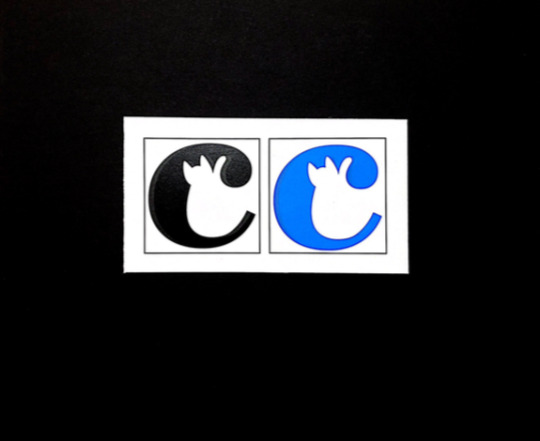

For the letter C, I chose the lowercase serif font, century schoolbook. I used the space between the serif and the main character stroke to make a cat tail, and continued to make a silhouette of the cat by cutting into the main stroke. For the letter H, I chose the san serif italic capital univers condensed. After looking at many different H variations, I noticed that the bar of the H resembled a bridge. I extended lines diagonally from the top of the H down to the bottom, to resemble cable ties.
0 notes
Photo
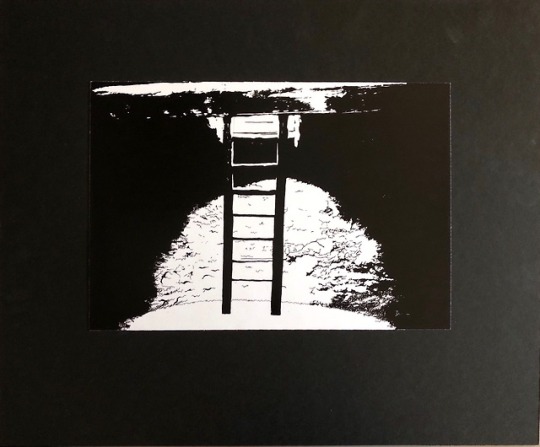
This is a picture of an old Native American kiva. The Pecos would perform their spiritual ceremonies down underground. The picture represents “prospect.” If you’re feeling underground, there’s always a light at the end of the tunnel. The light represents the outlook towards the future, and the ladder takes you out of the darkness, to get out of whatever rut that you’re in. The positive and negative space helps show the darkness of the underground and the light showing through the top, accentuating the focal point of the piece. I used texture on the walls to show the rugged rock bottom of the earth beneath us.
1 note
·
View note
